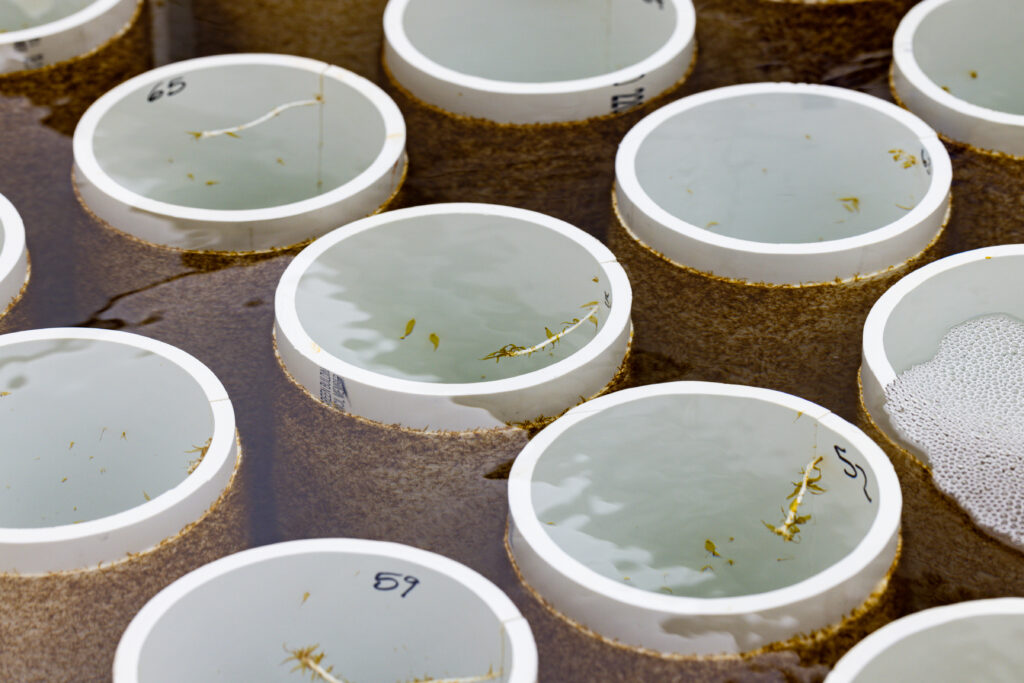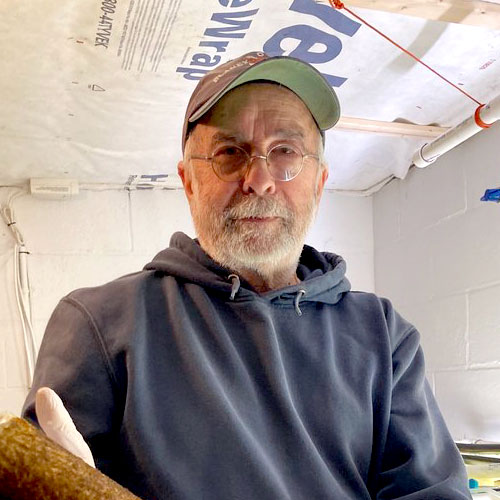If you’re interested in growing your own seed or looking for guidance on collecting sorus tissue, check out the hatchery track in the Hub for guidance on starting and running a kelp hatchery.
Back to: Map Your Resources
To grow kelp, you’ll need seed. To get seed, you’ll either need to buy it from a hatchery or grow it yourself. The simplest way to acquire seed is to purchase seed spools from a hatchery. Currently, there are a small number of kelp hatcheries operating in the U.S. that supply farmers in their state or region. Some are operated by vertically integrated companies that produce seed for growers and then buy back the kelp come harvest time. Others are independently operated, and some only produce enough for research trials.

Although kelp seed is grown in a lab, hatcheries rely on populations of wild kelp as the original source of their parent tissue. Many states have restrictions that require farmers to source this parent sorus tissue within the same geographical region as their farms. In Alaska, state regulations require that kelp farmers harvest 50 unique specimens of parent kelp within 50 kilometers of their farm site for use as seed stock. Some farmers collect this sorus tissue themselves and then ship it to a hatchery to be processed into seed spools, which are ultimately shipped back to the farmer. In some southern New England states, the sorus tissue of parent kelp must be harvested within the waters of the state where you intend to farm.
When you’re searching for a hatchery, make sure to ask if they have the appropriate permit to grow seed for a commercial farm, and what restrictions might apply. Because some hatcheries are shipping seed, it’s possible to source your seed from an operation outside your region. It is a good idea to connect with more than one hatchery, and you could consider ordering seed spools from multiple hatcheries to help hedge your bets.
If you can’t source seed from a hatchery nearby, you might choose to grow it yourself. Several experienced kelp farmers have had success growing seed for their own farms. Keep in mind that this will require an entirely separate set of investments and skills—and would be a tall ask for first-year farmers.
GreenWave Tip
Ask around to learn where other farmers in your region get their seed. Hatcheries tend to prefer to include small farms in group orders of spools.

Kelp farmer Dave Blaney from Point Judith, Rhode Island talks about starting a hatchery in his basement to supply his own farm and other farmers in his region in this article.